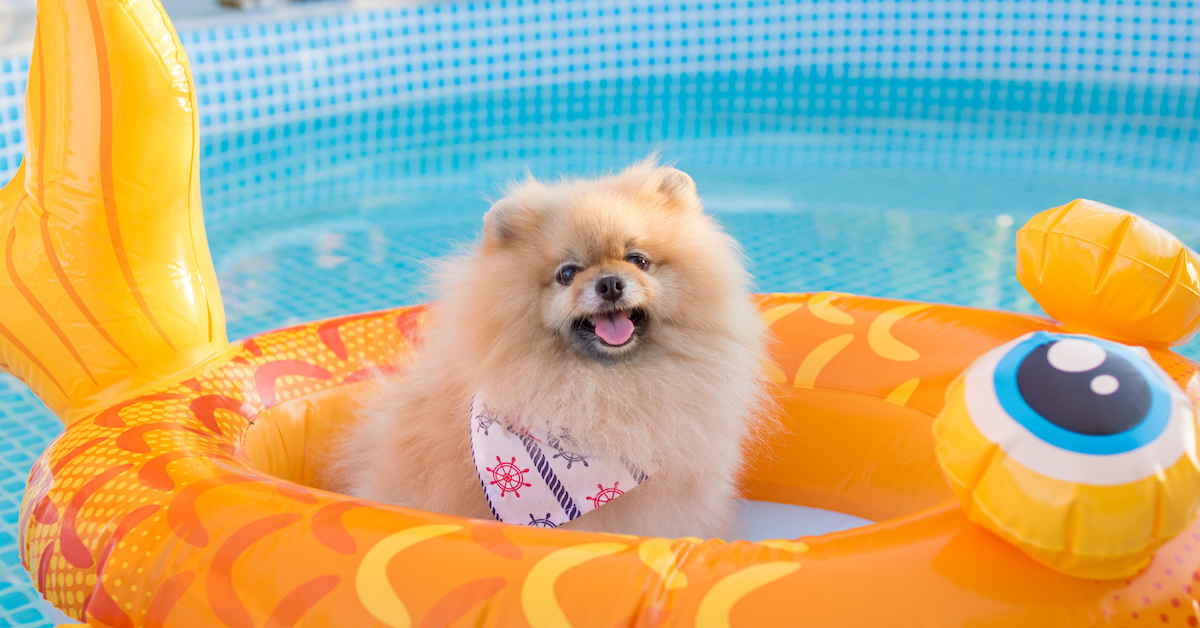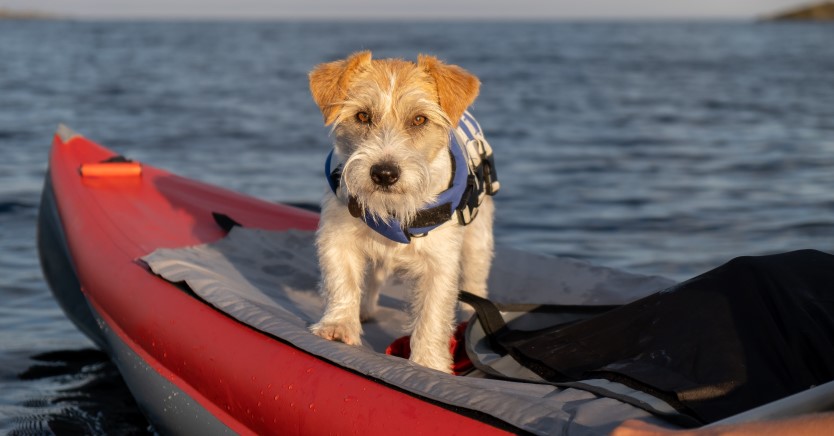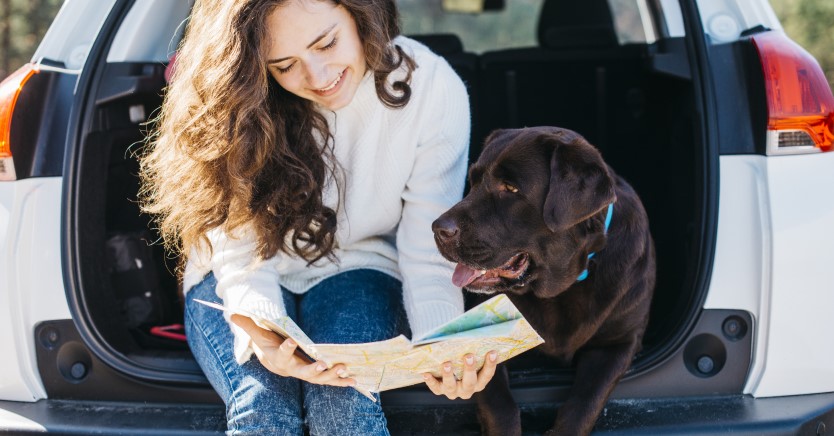Pool Safety for Pets: How to Keep Your Dog Safe Around Water
Many dogs love water but swimming pools pose certain risks.

Swimming can be a great form of exercise for dogs, as well as a fun way to keep cool. Even dogs who don’t like water may enjoy an afternoon nap on the pool deck. If you own a pool, chances are your dog spends some time in and/or around it. While many dogs use caution around swimming pools, accidents can happen. Keeping your pet safe around water requires proper supervision, proper gear, and some basic training. Learn the importance of practicing pool safety for pets and how to keep your furry friend safe.
Common Swimming Pool Dangers for Pets
Pools and other water sources pose serious risks for pets. Some of the most common threats to look out for include:
Accidental Drownings
One of the biggest risks that pet owners face when they bring their pet to the pool is accidental drowning. Even dogs who are seasoned swimmers can drown, especially if they get too tired or are unable to find their way out of the pool.
Water Intoxication
Many pet owners are unfamiliar with water intoxication. This condition occurs when a dog swallows too much water, causing sodium levels in the blood to dilute. Although this condition is relatively rare, it can happen. Saltwater pools are especially dangerous if your pet swallows too much.
Skin Irritation
Well-maintained pools should contain a safe balance of chemicals. However, when too many chemicals are added to the water, it can be dangerous for your pet to swim. These chemicals can cause skin irritation, such as redness, itching, and flaking of your dog’s skin.
Ear and Eye Infections
There is a possibility that your dog could suffer an ear or eye infection due to pool water. When water enters the ear canal, it sometimes can’t find a way out, causing bacteria to accumulate in the ear. Bacteria in the water can also enter the ears and eyes, resulting in an infection.
Tips to Keep Your Dog Safe In & Around Pools
Pools can provide families, including Fido, with plenty of fun and excitement over the summer months. However, it’s important to use certain precautions to prevent illness, injury, or even death. Follow these tips to keep your pet safe in and around the pool:
- Invest in a life jacket. Pet life jackets are one of the best ways to prevent accidental drownings. If your pup suffers from a muscle cramp or is too tired to keep his head above the water, a life jacket will help keep him above the water’s surface. Be sure to choose a quality lifejacket made for your dog’s size and weight.
- Teach your dog to swim. While your dog may know how to paddle in place, he may not have a full handle on swimming. Take the time to teach your dog to swim by getting in the pool with him and engaging in a few paddling sessions. Be sure to put on his life jacket first to give him more confidence in the pool.
- Use chemicals sparingly. As too many chemicals can cause irritation to the eyes, ears, and skin, it’s important not to use too much. Dogs are especially prone to problems caused by chlorine. If your dog swims frequently, consider converting to a natural pool and ditching the harsh chemicals altogether.
- Always supervise your pet. No matter how well your dog can swim, a pet should never be left alone in or around a pool. Dogs can become overly excited or distracted, increasing their odds of an accident. If you’re not available to watch your pet, take him back inside where he will be safe.
- Enforce frequent breaks. Your dog may want to keep swimming but the occasional break is necessary. Regular breaks can help prevent your dog from getting too tired or overheating on hot days. Watch for the signs of heat exhaustion, such as excessive panting, excessive drooling, lack of urine, rapid pulse, muscle tremors, and fever.
- Discourage drinking. Some dogs may try to drink the pool water, especially if there are no other water sources around. Make sure that your dog always has access to a bowl of fresh, cool water both outside and inside. If you notice that your dog is trying to drink from the pool, say “no!” and offer fresh water instead.
- Put barriers up around the pool. If you allow your dog to go in the pool even once, he may believe that he can go in again. Without a barrier, your dog could jump in when you’re not paying attention. Consider putting a fence or other barrier around the pool to keep your dog out when you’re not available to supervise.
- Install a pool ramp. If your pool has traditional steps, you may find that your pet has a hard time getting in and out of the pool safely. Consider installing a pool ramp that will allow your pet to walk in and out of the pool with ease. Pool ramps are also easier to navigate when your pet is tired or his eyes are irritated from the water.
Not every dog enjoys the water but those that do will often play for hours. However, not all dogs can handle long play times in the pool. It is important to know what your pet can endure and when to remove your dog from the pool for breaks. When you take the proper precautions, you and your pet can have a lot of fun splashing around in the sun.
Ready to start saving money on pet wellness care?
Then take a look at Mint Wellness, the pet wellness plan that provides fast reimbursement on routine pet care. Save on vaccinations, wellness exams, preventatives, dental, and more!
Learn More


